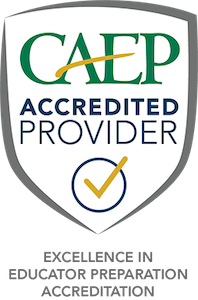[back to CAEP Self-Study Report]
COEPD discussions for addressing the AFI at the initial and advanced levels centered on exploring how candidates could be offered a more diverse clinical as well as curricular experience with ELL students. As documented in the DIVERSITY OF P-12 STUDENTS IN CLINICAL PRACTICE SITES INITIAL LEVEL, the COEPD’s first initiative was to track the number of WV ELL students. As can be seen in the document, the number of ELL students in the state has historically been extremely low (2014-15 – 0.93%, 2015-16 – 1.14%, and 2016-17 – 1.0%). Few counties or schools can provide an opportunity for COEPD candidates to work with English Language Learners.
Acknowledging the difficulty with finding actual clinical sites for experiences, the COEPD decided in 2015 to explore the idea of combining a virtual experience with a curricular requirement. The ESL Program Coordinator was asked to provide training and curriculum suggestions in order to provide a framework for helping candidates understand English Language Learners. The 2015-16 year was devoted to development of the training with the goal of presenting the information to faculty in the 2016 fall semester.
As part of a needs assessment, both initial and advanced faculty were surveyed in 2016 to determine progress made in incorporating a well-grounded framework for ELL. Results are shown in ELL DATA FROM DIVERSITY SURVEY. Of the 37 responses, 27 or 73% of the faculty indicated that they had no assignments specifically assessing candidate knowledge and skills for working with ELL students.
In late fall 2016, the ESL Program Coordinator, partnering with the Diversity and Social Justice Committee and the Assessment and Accreditation Coordinating Council (AACC), developed the following COEPD goal statement and objectives for working with ELL students.
Realizing we need to train educators who can help all students reach their highest potential, we have identified a population who our candidates may not be as well prepared to help, English Language Learners (ELL). ELL are a diverse group with unique needs. COEPD wants to train candidates so they are prepared to work with ELL. In order to achieve this goal, our candidates will be able to:
Define key TESOL terms and acronyms
Outline English Language Learners’ unique learning needs
Recognize diversity among ELLs
Recall key concepts in Second Language Acquisition
Be aware of what it is like to be an ELL in school
Explain where to turn for resources and help (CONCEPTUAL FRAMEWORK: pages 16-17)
Additionally, a module was developed, which included a video, discussion questions and a rubric.
In spring 2017, initial and advanced faculty were trained on CAEP diversity concepts and introduced to the goals and objectives for training candidates to work with ELL students. During the training, programs were instructed to begin incorporating the module into coursework and clinical experiences. Programs were permitted to substitute other instructional methods as long as objectives were met.
To assess the meeting of the objectives, programs were asked to use the OBJECTIVE ALIGNED ELL RUBRIC. Data collection began Fall 2017 and results are included in a data chart in the OBJECTIVE ALIGNED ELL RUBRIC document. Early analysis reveals positive outcomes. At the Advanced Level, four programs (School Psychology, General Mathematics through Algebra I, Post-Bac, Preschool Special Needs) have piloted the rubric. Of the 47 candidates assessed, at least 70% scored at “Exemplary” or “Proficient” on all five categories. Similar results surfaced at the Initial Level during the pilot, with 73% of the candidates scoring at “Exemplary” or “Proficient” on all five categories. The Initial Level pilot included elementary and secondary candidates adding the Multi-categorical endorsement. All programs will be required to provide data by the end of 2018 on ELL candidate competency.
| Evidence | Applys To |
|---|---|
| CONCEPTUAL FRAMEWORK | |
| DIVERSITY OF P-12 STUDENTS IN CLINICAL PRACTICE SITES INITIAL LEVEL | |
| ELL DATA FROM DIVERSITY SURVEY | |
| OBJECTIVE ALIGNED ELL RUBRIC |

